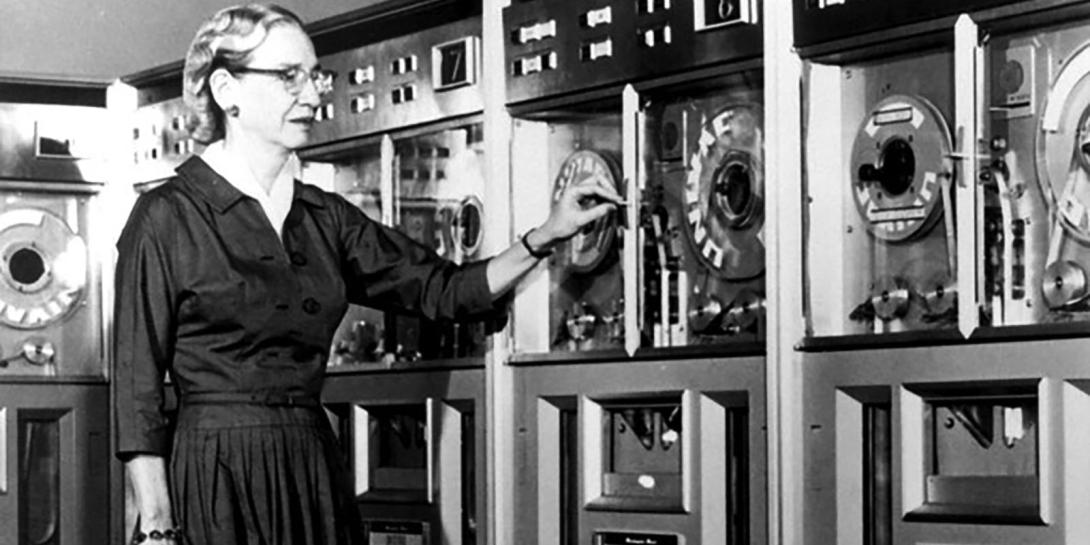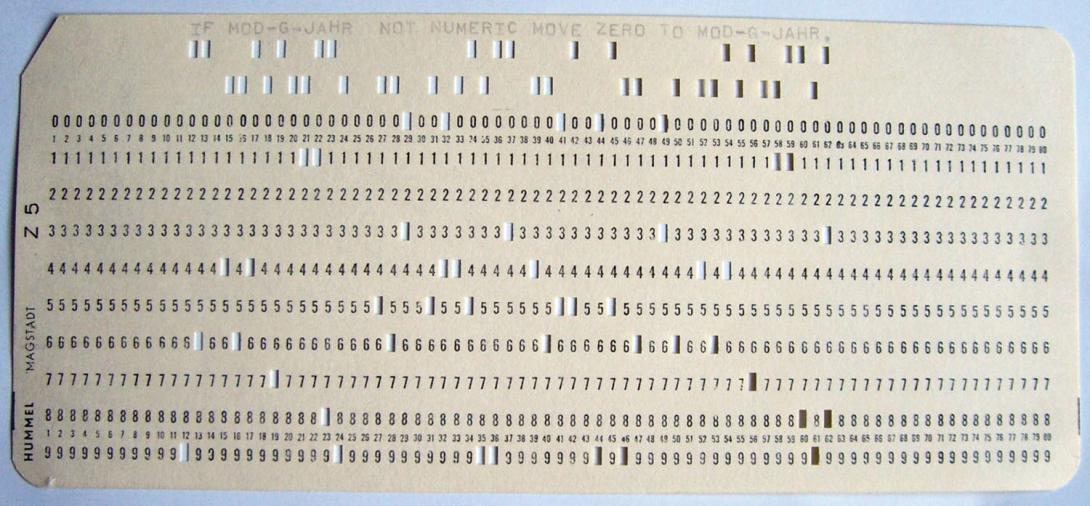Aging Workforce Brings On COBOL Crisis
At 61 years old, the common business-oriented language is the same age as many college kids’ parents. The coding language had its own exhibit in the Smithsonian National Museum of American History in 2013. Many in the industry now call it a “legacy language,” but its continued, widespread use tells a different story.
Reuters reported that 220 billion lines of common business-oriented language (COBOL) code remain in financial systems worldwide, which equates to COBOL handling $3 trillion of trade daily. Further, it is used in 95 percent of ATM swipes, and more than 70 percent of Fortune 500 companies continue to use the mainframe computers that operate using COBOL. The U.S. Treasury Department, Justice Department, IRS, Department of Veterans Affairs and other government systems use COBOL. The language is not dead, and it is not dying, but its coders are.
COBOL is a computer coding language that was created in 1959 by some of the era’s finest computer scientists, including Rear Adm. Grace Hopper, USN (Ret.). The language was initially created as a temporary solution to the lack of standardized financial coding languages at the time. However, support from the U.S. Defense Department in combination with the release of the IBM System/360 mainframe in 1964 resulted in COBOL becoming the backbone of the financial industry.
The average COBOL programmer is about the same age as the language itself. The majority of COBOL experts range in age from 50 to 70 years old and are not only getting older but are also rapidly leaving the workforce. The mass exodus of a skill set necessary to keep the U.S. economy functioning is a looming global crisis.
Since coding made its way into the national and international infrastructure, the world has not yet faced the challenges that come with the aging and eventual death of a generation. Andrew Starrs, a group technology officer at Accenture, put it simply: “[It’s] not so much that an individual may have retired, he may have expired, so there is no option to get him or her to come back.”
This crisis is the first of its kind, but it won’t be the last. Every newspaper in the United States has written an article about how quickly technology is bounding forward in the 21st century. As Marc Prensky wrote in 2001, Gen Z is a generation of digital natives. Possession of the latest and greatest technology is today’s designer handbag and carrying cash is a thing of the past.
The culture of rapidly advancing technology has resulted in a generation of technocrats that are interested in tomorrow’s invention, and that future-minded culture translates to the coding community. New coders are not interested in learning the languages of yesterday and seasoned coders are not interested in upkeep. Innovation, development and advancement are the words of Gen Z, but its fascination with the future has caused them to forget about the past, a mistake that, if not acted on now, will certainly be detrimental and may be irreversible.
With trillions of dollars already circulating through the technology that is based in COBOL, banks consider it far too risky to replace these legacy systems. The terrifying possibility of terabytes of customer data and trillions of dollars disappearing into cyberspace is simply not worth it, and the economic repercussions of such an event could throw the world’s economy into turmoil. The Commonwealth Bank of Australia made the transition to new infrastructure in 2012, and it took five years and cost almost $750 million.
Though the United States is rapidly approaching a crisis, it is not there yet. Measures can be taken to slow and potentially avert this impending disaster. An ideal outcome would see the financial sector slowly transitioning from COBOL-run mainframes to newer technology. A workforce of COBOL experts would maintain the infrastructure until it is fully updated, and this would provide a knowledge base for any remaining stopgap COBOL code in the new infrastructure.
To achieve this goal, the United States needs to start by making the transition from COBOL to a new infrastructure a national priority. The U.S. government can and must be an example to the private sector by allocating funding for systems in the Treasury Department, Justice Department, IRS and Department of Veterans Affairs, among others, to transition from COBOL.
More than funding though, this effort will be lacking in manpower. In an effort to address this issue, the U.S. government can implement the creation of a Civilian Cyber Corps, similar to President Franklin D. Roosevelt’s Civilian Conservation Corps (CCC). Founded in 1933, the CCC not only employed millions of young Americans during the Great Depression, but it also allocated manpower to a nationwide conservation effort and taught professional skills to its workforce.
A Civilian Cyber Corps could teach young Americans basic information technology skills with an emphasis on a specific skill set necessary to the U.S. government in exchange for a mandatory service commitment. Initially, this skill set would be a focus on COBOL, but as technology evolves, so too would the specialized skill set.
The Center for Strategic and International Studies estimates that by 2022, the global cybersecurity workforce will face a shortage of 1.8 million workers. Establishing a Civilian Cyber Corps would not only allow the United States to provide a workforce for the transition from COBOL to newer infrastructure but also give millions of young Americans a jumping-off point for a career in the information technology and cyber workforce in an effort to fill that projected shortage.
Though this is the first time the world has faced an impending crisis because of aging technology and aging population, it will not be the last. Yesterday’s language of choice for the financial sector was COBOL. Today’s language of choice is Java, and eventually tomorrow will have a different language. High-level code has only been the basis for the financial system since it was invented in the 1950s, so this will be the first generational shift the world has experienced since the inception of the current system.
But technology and coding are not so different from other fields of study. Today, students study ancient languages, historical texts and math because, despite their age, these subjects remain relevant. Colleges and universities should construct and offer a Computer Science–Classics major. Such a major could explore the development of technology, teach the coding of yesterday, and ensure that knowledge of old technology is properly documented and retained. The technology industry is trying to make education in this field available to professionals, but academia should deepen and formalize this essential field of study.
Companies like IBM Corporation are offering COBOL fellowships and training opportunities that have taught about 180,000 COBOL developers over the past 12 years, but in a growing technology workforce of almost 12 million people, this number is a small drop of water in a very large bucket.
Experienced COBOL professionals continue to support the COBOL infrastructure on an hourly contracting basis, and companies such as COBOL Cowboys maintain networks of veteran COBOL programmers. These companies are staffed with an aging workforce who can ask for almost any payment for their work as the pool of programmers from which to draw shrinks. The COBOL Cowboys states on its website that the company name was “inspired by the movie Space Cowboys in which experienced (some retired) astronauts were called back into service to solve a current-day problem in outer space.”
Unfortunately, the window of time in which banks can reach into the past for COBOL experience is finite. Though much of the world remains ignorant of this issue, banks and other financial institutions are becoming increasingly aware of the potential disaster that could result from their ancient systems. However, rather than look for new approaches and innovative solutions, almost all of these institutions are simply maintaining their current infrastructure. Money is an obstacle. Manpower is an obstacle. Education is an obstacle. Though these obstacles present unique and monumental challenges to the institutions facing this crisis, they must be addressed while there is still the time and knowledge base to do so.
Designating the COBOL crisis as a national priority and establishing the Civilian Cyber Corps are steps the U.S. government can take to begin leading the United States toward a solution. Creating a formalized field of study for aging and outdated technology and coding languages will ensure that the United States is never again unprepared to face this issue. The country is sprinting head-on into a crisis that is avoidable. It must take the steps necessary to avoid it.
This article placed second in The Cyber Edge writing competition. Allison Annick entered the competition as a senior midshipman at the United States Naval Academy, where she majored in cyber operations and minored in Chinese. She is now a commissioned U.S. Marine Corps 2nd Lieutenant.
The views expressed here are solely those of the author in her private capacity and do not in any way represent the views of the U.S. Naval Academy, U.S. Navy or the Department of Defense.
The first place winning article in SIGNAL Media’s The Cyber Edge writing contest was published in the June issue of SIGNAL Magazine. ManTech Corporation is sponsoring the competition.







Comment
The languages you code in are
The languages you code in are the tools you use, the skill is knowing how to solve problems, them you choose the appropriate tools to implement your solution. COBOL is appropriate for a lot of business problems.
1987 I worked with pdp 11
1987 I worked with pdp 11,Unix,mainframe on all platforms I worked using cobol infact in dos too but the current Windows cobol you can call web routines too .cloud applications are in market hope they will give option to interface with cobol ...
Comments